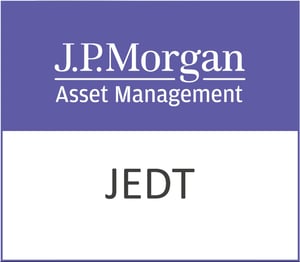The latest moves by European capitals have injected a fresh undercurrent of unease into energy corridors, nudging traders to reassess risk profiles and positioning. As Brussels tightened the screws on seaborne services for Russian crude, a subtle tension rippled through trading rooms. Beneath the surface calm in futures pricing, investors are recalibrating assumptions about supply lines, logistical chokepoints and the broader momentum of global energy flows.
When European ministers agreed to restrict shipping support for tankers carrying Russian crude, attention turned swiftly to the fleet of vessels now facing obstacles in securing insurance, financing and essential port services. Those constraints do not immediately remove barrels from the market, but they beget doubts over the reliability of established cargo routes. Investors weighing long-term allocations in energy funds or equities linked to storage, shipping and refining must now factor in an added layer of geopolitical friction that could widen differentials or reroute volumes to alternative hubs.
Brent benchmarks, trading in the low eighty-dollar realm, found modest support as liquidity thinned ahead of the weekend. The resilience of oil prices owes something to this backdrop of constrained logistics. When traders perceive a tightening of service provision, be it insurance, classification or freight, risk premiums naturally creep higher. U.S. futures mirrored the pattern, with West Texas Intermediate holding near eighty dollars a barrel. It is within this narrow band that strategic players position themselves, mindful that even a few dollars’ shift in futures curves can propagate through corporate earnings forecasts and sovereign revenue projections.
Beyond immediate price action, the new European sanctions overlay a broader narrative of supply diversification. Buyers in Asia, traditionally reliant on a mix of Middle Eastern and Russian grades, are reconsidering the balance. Some may opt to lift more crude directly from the Gulf coast of the United States, while others will scout for discounts in West Africa. Such realignments ripple through freight markets and storage facilities, creating pockets of opportunity for tanker owners willing to service cruises around West Africa, or for traders adept at financing unconventional cargo swaps.
At the same time, the Organisation of Petroleum Exporting Countries and its allies continue to navigate demand uncertainties. Their own calibrations of output policy now must absorb the likely effects of this European intervention. A marginal slowdown in Russian exports could prompt a modest uptick in OPEC+ output plans later this year. Conversely, persistent logistical frictions might encourage the group to tap spare capacity more gradually, seeking to sustain price stability. For sovereign wealth funds and energy infrastructure investors, the interplay between OPEC+ discipline and Western sanctions forms a critical axis of risk versus reward.
U.S. crude inventories provide another lens through which to view the evolving saga. Recent data showed a slight build in stocks, reflecting a window of seasonal refinery maintenance and uneven demand. Yet the stockpile increases seemed muted in comparison with long-term seasonal norms. That relative tightness underscores why futures have held firm even as logistics questions swirl. Traders operating term structures and carrying trades recognise that a mid-year lull in refinery runs does not equate to a surplus, especially when vessel insurance hurdles threaten the fluidity of sea lanes.
Meanwhile, currency markets offer a complementary perspective. A modest weakening of the U.S. dollar against a basket of peers has lent additional support to dollar-denominated commodities. For investors hedging foreign-exchange exposures, such moves factor into total-return calculations on oil-linked assets. Even a few basis points in currency swings can amplify gains or cushion declines for those holding physical barrels or derivative positions offshore.
Looking ahead, the oil complex may find its main narrative shaped less by headline prices than by the granularity of shipping data and the progress of compliance checks. Satellite-tracked vessel movements, anonymised port call logs and underwriting notices will increasingly inform positioning decisions. Market participants who have invested in analytical tools and data subscriptions stand to gain a sharper edge in anticipating supply bottlenecks or identifying emerging arbitrage routes.
In this evolving landscape, investor portfolios should reflect both the immediate implications of European sanctions and the longer-term dynamics of energy security. Exposure to integrated oil and gas majors, which can reallocate cargo mix and tap alternative pipelines, may offer resilience against isolated logistical shocks. Conversely, specialist service providers tied to ageing tanker fleets might face headwinds if they cannot adapt to stricter classification regimes.
Oil remains a complex dance between geopolitics, infrastructure and macroeconomic rhythms. The latest European measures underscore that even incremental policy shifts can reverberate across global value chains, altering cost structures and profit margins. Those with the agility to interpret shipping intelligence alongside traditional demand indicators will be best placed to navigate the currents ahead.
Oil markets function as the circulatory system of the global economy, balancing supply from producer nations with demand across consuming regions. This balance relies on a vast network of pipelines, tankers, refineries and storage sites that collectively ensure energy reaches end users efficiently.
Challenger Energy Group Plc (LON:CGE) is an Atlantic-margin focused energy company, with production, development, appraisal, and exploration assets in the region. Challenger Energy’s primary assets are located in Uruguay, where the Company holds two high impact offshore exploration licences, totalling 19,000km2 (gross) and is partnered with Chevron on the AREA-OFF 1 block. Challenger Energy is quoted on the AIM market of the London Stock Exchange.













































